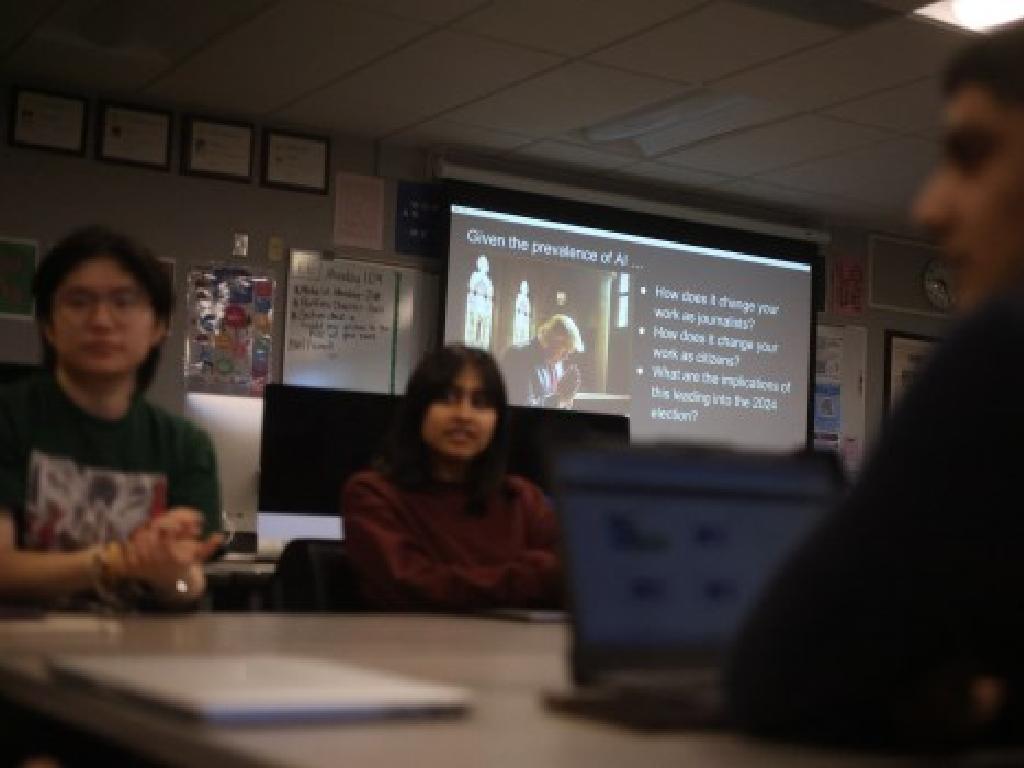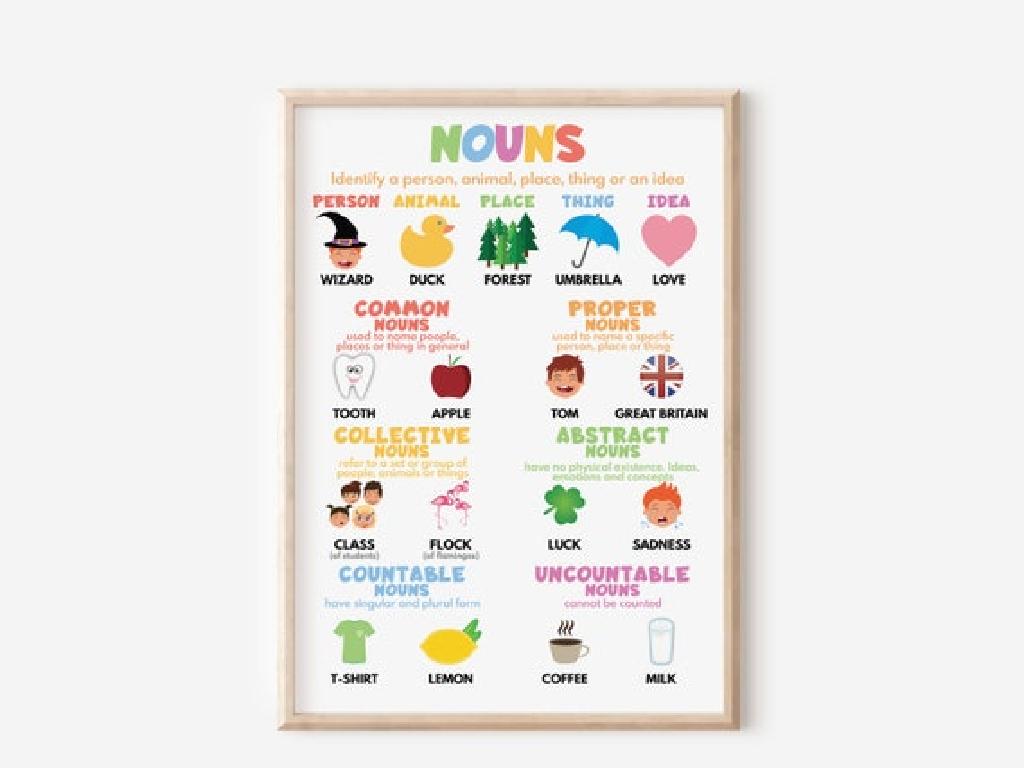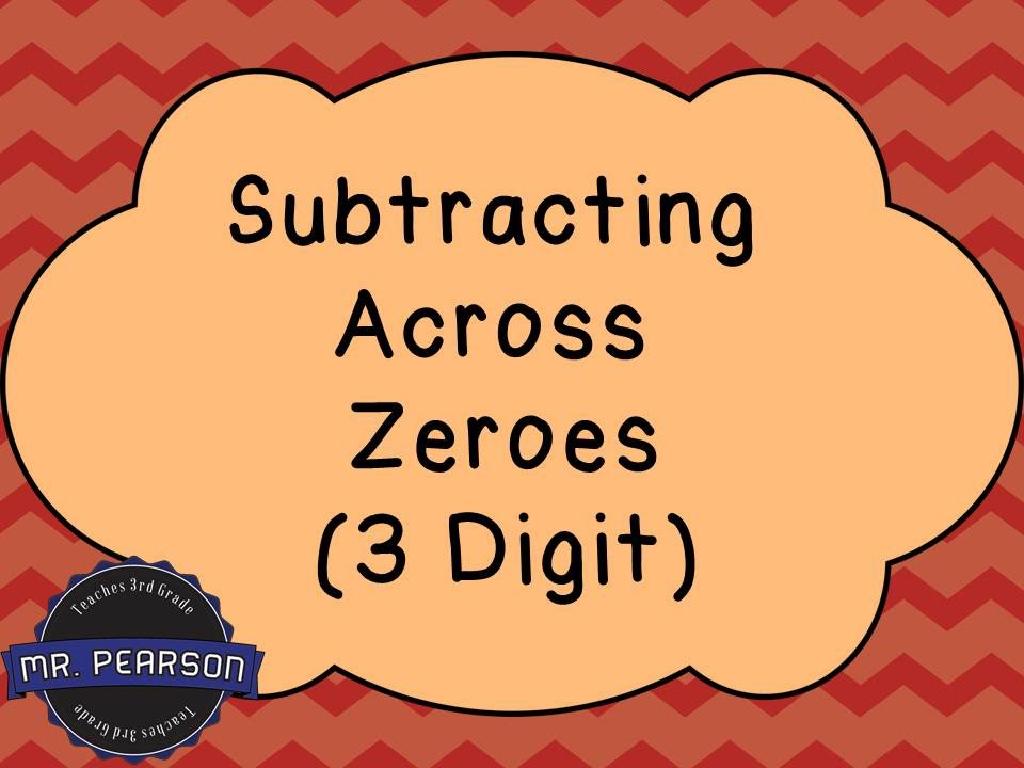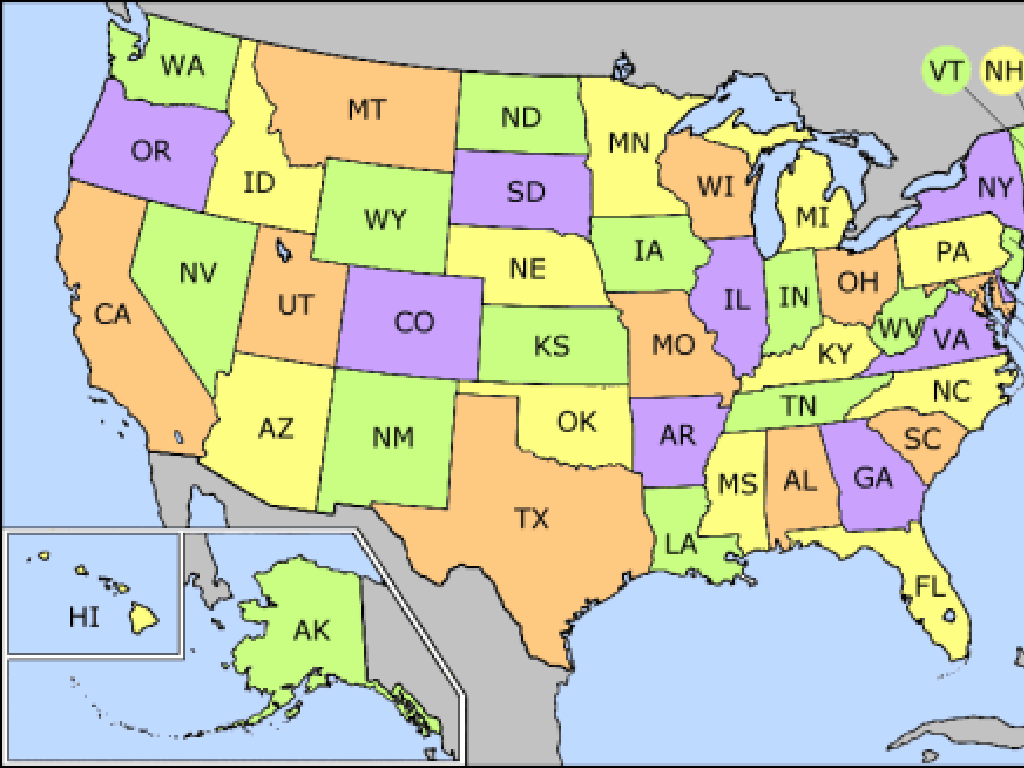Convert Between Place Values
Subject: Math
Grade: Third grade
Topic: Place Value
Please LOG IN to download the presentation. Access is available to registered users only.
View More Content
Welcome to Place Values!
– Understanding place value importance
– Composition of numbers in places
– Numbers have ones, tens, hundreds places, etc.
– Each place is 10 times the right place
– If 1 is in the tens place, it’s worth 10 times more than in the ones place
– Practice with place value conversion
– Convert 100s to 10s, or 10s to 1s using multiplication or division by 10
|
This slide introduces the concept of place value, which is fundamental in understanding how numbers are structured and how their value changes depending on their position. Emphasize that each step to the left increases a digit’s value by ten times. Use examples like 10 ones equal 1 ten, or 10 tens equal 1 hundred to illustrate this point. For practice, provide students with numbers and ask them to convert between hundreds, tens, and ones, reinforcing the concept that moving to the left multiplies by 10, and moving to the right divides by 10. This will help them grasp the concept of place value as a building block for more complex math skills.
Understanding Place Value
– What is place value?
– It’s the value of where a digit is in a number.
– Examples: ones, tens, hundreds
– 1 in 15 is ‘ones’, 1 in 150 is ‘tens’, 1 in 1500 is ‘hundreds’.
– Digits have different values
– A ‘3’ in 300 is worth 300, but in 30, it’s worth 30.
– Place determines digit value
|
This slide introduces the concept of place value, which is fundamental in understanding numbers in math. Place value refers to the value of a digit based on its position within a number. For example, in the number 345, the ‘5’ is in the ones place and represents 5 ones, the ‘4’ is in the tens place and represents 4 tens or 40, and the ‘3’ is in the hundreds place and represents 3 hundreds or 300. Emphasize that the same digit can represent different amounts depending on where it’s located in the number. Use visual aids like place value charts to help students visualize the concept. Encourage students to practice with different numbers to solidify their understanding.
Converting Ones to Tens
– Understanding that 10 ones equal a ten
– Just like 10 pennies make a dime, 10 single units make 1 ten.
– Group objects to visualize conversion
– Use items like blocks or beads to group into sets of 10.
– Practice: 20 ones to tens
– How many tens do we get from 20 ones?
|
This slide introduces the concept of converting ones to tens, which is a fundamental aspect of understanding place value. Start by explaining that just as smaller units like pennies can be grouped into larger units like dimes, single units can be grouped into tens. Use manipulatives such as blocks or beads to physically group items into sets of 10, helping students visualize the conversion process. For the practice activity, guide students to convert 20 ones into tens by creating two groups of 10. This hands-on activity reinforces the concept of place value and prepares students for more complex conversions. Encourage students to explain their thought process to ensure they grasp the concept.
Converting Tens to Hundreds
– Understanding 10 tens make a hundred
– Grouping tens visually
– Imagine 10 groups of 10 objects each forming 100
– Practice conversion
– Use objects or drawings to group tens into hundreds
– 300 tens to hundreds
– How many hundreds are in 300 tens?
|
This slide is aimed at helping third-grade students understand the concept of place value, specifically converting tens to hundreds. Start by explaining that just like 10 ones make a ten, 10 tens make a hundred. Use visual aids, such as grouping objects or drawing groups of tens, to help students visualize the concept. For practice, ask students to convert 300 tens into hundreds, guiding them to understand that they need to divide the number of tens by 10 to find the number of hundreds. This exercise reinforces their understanding of place value and prepares them for more complex conversions.
Converting Hundreds to Thousands
– 10 hundreds equal 1 thousand
– Grasping larger place values
– Larger numbers have more place values, like thousands.
– Practice conversion
– Let’s convert hundreds to thousands together!
– How many hundreds in 4000?
– 4000 has 40 hundreds because 40 x 100 = 4000.
|
This slide introduces the concept of converting hundreds into thousands, which is a fundamental aspect of understanding place value. Start by explaining that just as 10 ones make a ten, 10 hundreds make a thousand. Emphasize the concept of place value by showing that as we move to larger numbers, we enter into new place values such as thousands. Use visual aids or manipulatives if possible to help students grasp the concept of larger place values. For the practice problem, guide students through the process of dividing 4000 by 100 to find out how many hundreds are in 4000. Encourage students to think about other multiples of 100 and how they would convert to thousands. This exercise will help solidify their understanding of place value and the relationship between hundreds and thousands.
Place Value in Daily Life
– Understanding money with place value
– Each digit in a price has a place value, like dollars and cents
– Counting large quantities of items
– Grouping objects by tens and hundreds makes counting easier
– Place value in everyday activities
– Knowing place value helps with time, shopping, and organizing
|
This slide aims to show students how place value is not just a math concept but a practical tool they use in daily life. When dealing with money, place value helps distinguish between dollars and cents, ensuring accurate financial understanding. Counting objects, like pencils in a box, becomes manageable when we group them into tens and hundreds. In everyday life, place value is essential for telling time, shopping, and even organizing things at home. Encourage students to think of examples where they use place value, like reading price tags or counting toys, to make the concept more relatable and easier to grasp.
Let’s Practice Together: Place Value Conversion
– Interactive whiteboard conversion
– Students take turns at the board
– Come up and show how to change hundreds to tens or tens to ones
– Classmates assist when needed
– If a friend is stuck, give hints or explain
– Group learning and support
|
This slide introduces an interactive class activity using the whiteboard to practice converting between place values. Each student will have the opportunity to come to the board and demonstrate their understanding of place value conversion, such as turning a digit in the hundreds place into the equivalent number of tens or ones. It’s a chance for hands-on learning and for students to support each other in a group setting. The teacher should prepare several examples of different difficulty levels and encourage participation from all students. If a student struggles, prompt their classmates to offer assistance, fostering a collaborative learning environment. Possible activities include converting between hundreds, tens, and ones, creating larger or smaller numbers using place value knowledge, and comparing numbers to reinforce the concept of place value.
Class Activity: Place Value Game
– Divide into small groups
– Each group receives digit cards
– Arrange cards to form the largest number
– Think about where to place each digit, especially the highest ones
– Discuss strategies with your group
– Share why you placed the digits in that order
|
This interactive game is designed to help students understand the concept of place value in a fun and engaging way. By arranging cards with digits, students will learn how the position of a digit affects the overall value of the number. Teachers should ensure that each group has a set of digit cards from 0-9 and encourage students to think critically about where to place each card to create the largest number possible. After the activity, lead a discussion on the different strategies used by each group. This will help students articulate their understanding of place value and learn from their peers. Possible variations of the activity could include creating the smallest number possible, or a number closest to a target number provided by the teacher.
Wrapping Up: Place Values
– Recap on place values
– Homework: Conversion worksheet
– Complete the worksheet to convert between ones, tens, and hundreds.
– Practice is key to mastery
– Keep practicing at home!
– Try more examples to get even better!
|
As we conclude today’s lesson, remind the students of the importance of understanding place values in math. The homework will consist of a worksheet where they will apply what they’ve learned by converting between ones, tens, and hundreds. Emphasize that consistent practice is essential for mastering this concept. Encourage them to not only complete their homework but also to seek additional practice problems if they can. This will help solidify their understanding and prepare them for more advanced math concepts.






